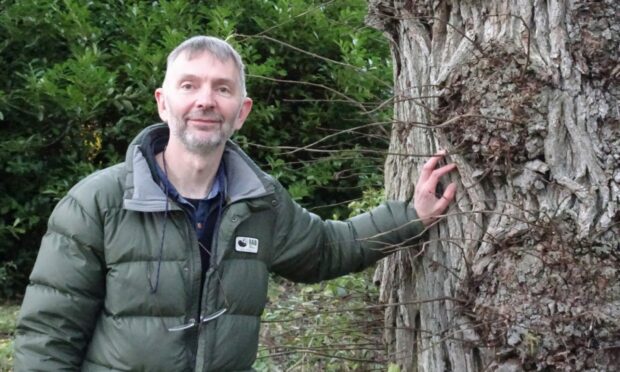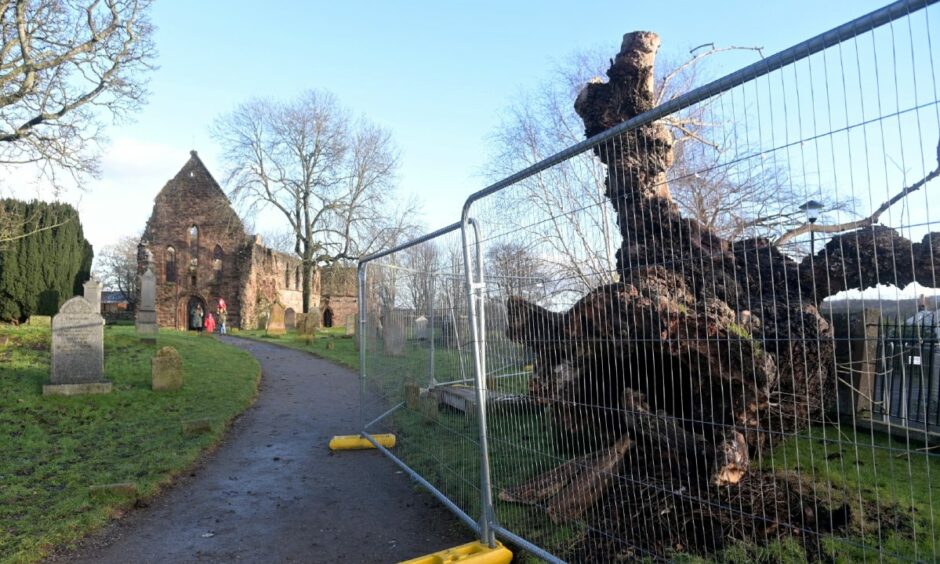Areas of the Highlands are being earmarked as refuges for elm trees as part of a fightback against the ravages of disease.
Since the 1920s, more than 60 million trees in the UK have succumbed to Dutch elm disease which is continuing to spread north and west through the country.
While the Highlands has escaped the worst of the disease, there have been high profile casualties.
An 800-year-old wych elm at Beauly Priory died last year and collapsed earlier this month.
Another ancient wych elm is among trees to have died on the Brahan Estate in Ross-shire.
Both areas could be future planting sites for wych elms showing promising signs of resilience to disease under a project aimed at repopulating parts of the landscape with elm.
Healthy elms surviving next to infected trees
This work takes advantage of the fact that a few rare examples of healthy elms continue to survive next to infected trees and woodland.
Dr Euan Bowditch, a forestry and social-ecology researcher at UHI Inverness, was the lead author in the award-winning report ‘The elm is dead. Long live the elm! New developments for elm conservation in Scotland’.
He was recently awarded a National Research Council/DEFRA Treescapes Fellowship to identify healthy elms and analyse their genetic variations.
In the next two years UHI, in partnership with the Royal Botanic Garden Edinburgh, aims to start re-instating elm in appropriate habitats to kick-start natural recovery.
The project is seeking help from the public, environmental bodies and landowners to identify healthy trees, which will be propagated by taking cuttings.
A pilot with the Borders Forest Trust in 2022 identified around 20 promising specimens, but the new project hopes to identify trees across Scotland.
Skye a possible site for replanting
After two or three years in a nursery, the cuttings will be planted in suitable areas, with disease-free locations such as Skye being considered.
Dr Bowditch said: “Once you start doing it, and doing it every year, the population can be restored with resilient specimens.
“It’s exciting because many people believe the elm is done and dusted, that it has no chance.
“This disease has been coming at us for 100 years, but this is the fightback.”
Dr Max Coleman of the Royal Botanic Garden, said: “Hopefully in 15-20 years we will see elm starting to spread across the landscape by itself, if sheep and deer are controlled. That would be significant.
“To do this we’re trying to find survivors that have stood the test of time, where the disease has been raging around them for decades, yet the trees are perfectly healthy.
“We don’t know exactly how they have survived. But if we can propagate them from cuttings, and ideally bring groups of similar survivors together, then they can start to reproduce.
“It’s giving them a helping hand essentially.”
Looking for a long-term solution
Many of the trees will come from the Borders which has the longest history of Dutch elm disease and, therefore, the best place to search for resilience.
Dr Coleman added: “You can’t just focus on keeping the disease out of an area as it will inevitably get through.
“We want to look at the bigger picture and try to find resilience. That’s going to be a better long-term solution than just holding the disease at bay.
“It’s like a zero Covid policy. It really makes no sense, disease will eventually arrive and run riot.
“Getting resilient trees into places that are currently disease-free is also a priority, a way to future-proof the situation.”
Seedlings from the Beauly Priory wych elm have been found but they are likely to have inherited vulnerability to disease from their parent.
But it is hoped survivor elms from the south of Scotland could be replanted in Beauly to replace its fallen and famous attraction.
“Seedlings of the Beauly tree are not likely to be resilient, so would be vulnerable to future waves of disease”, says Dr Coleman.
“If they want a replacement which is a native Scottish wych elm, the better plan is to get one of the resilient trees we are propagating.
New tree could replace Beauly elm
“That is perfectly achievable within the next couple of years. Wych elm grows quickly so there could be a big, imposing tree with a bit of character there at the tender age of 20.
“We could get to the point fairly quickly where you have a tree of some interest on the site that is the same species as the recently fallen elm.”
He said a similar replanting could happen on the Brahan Estate and help replace trees killed by Dutch elm disease in the last five years.
Are you interested in more exclusive and breaking Highland and Islands news from the P&J? If so, why not join our dedicated Facebook page HERE



